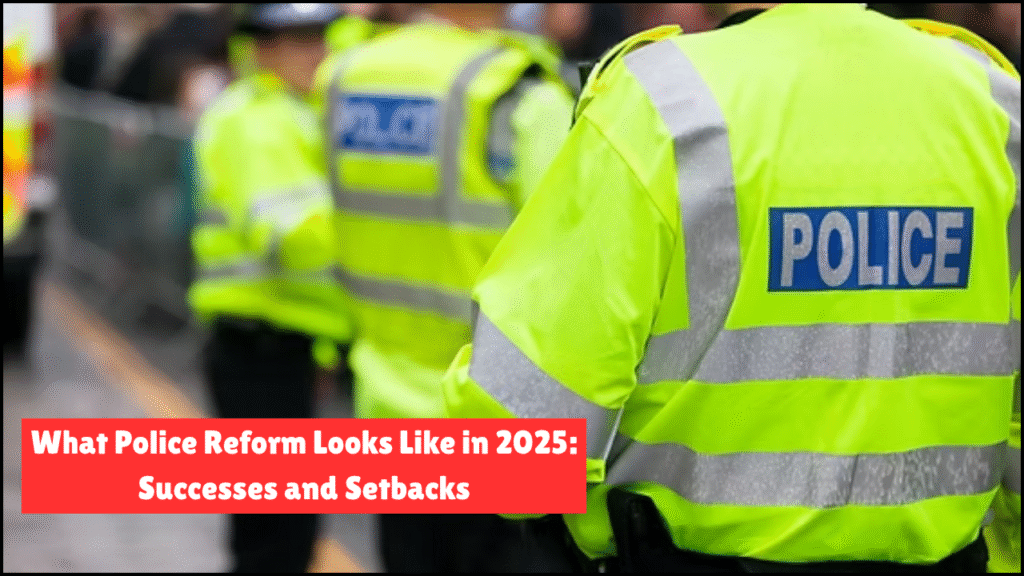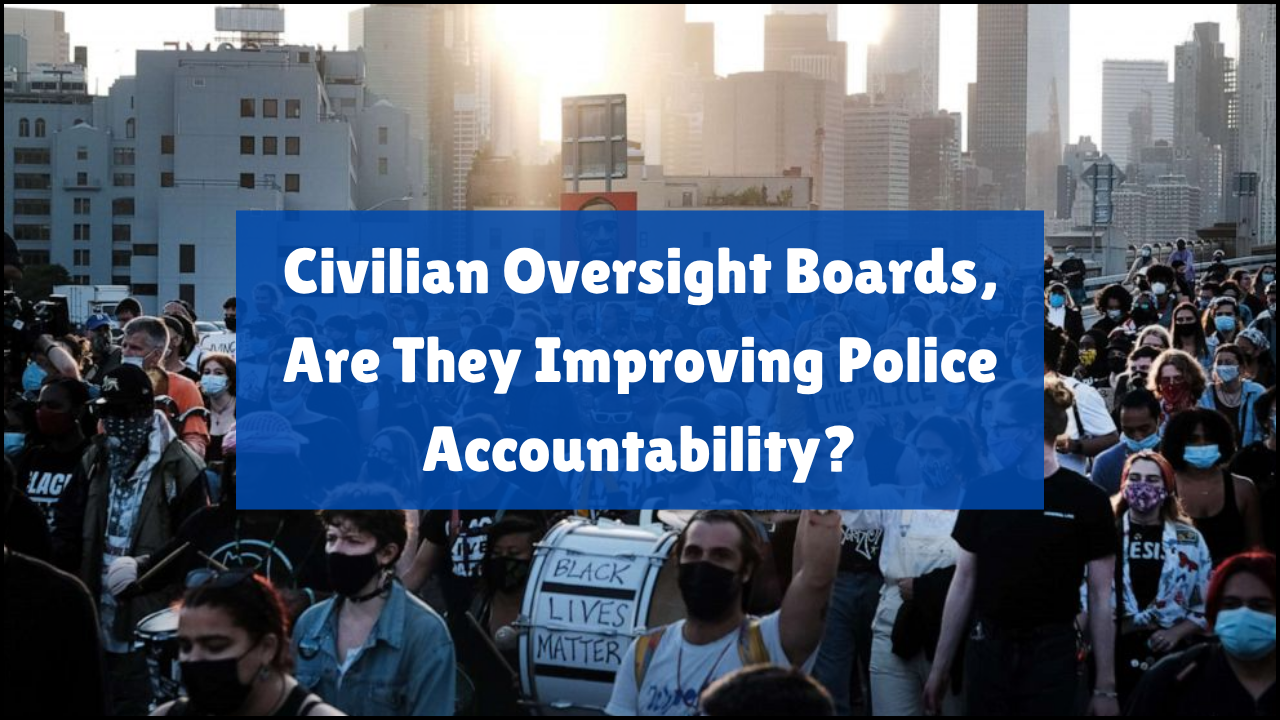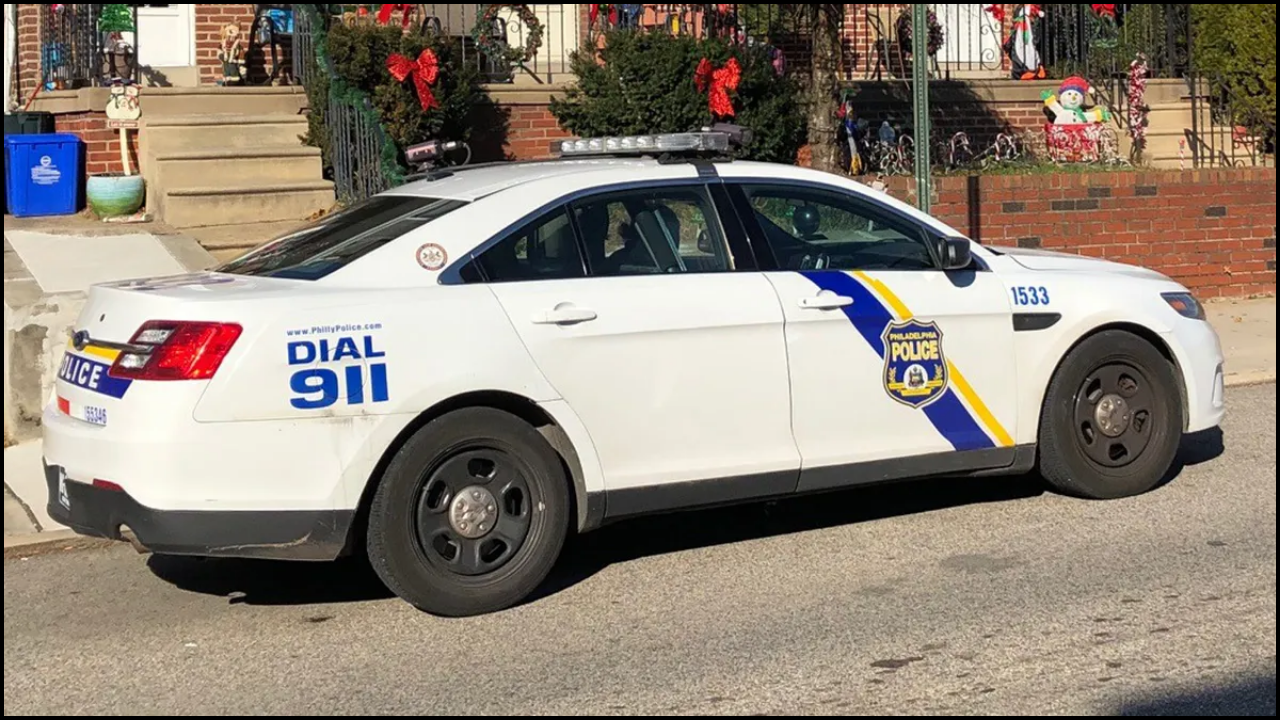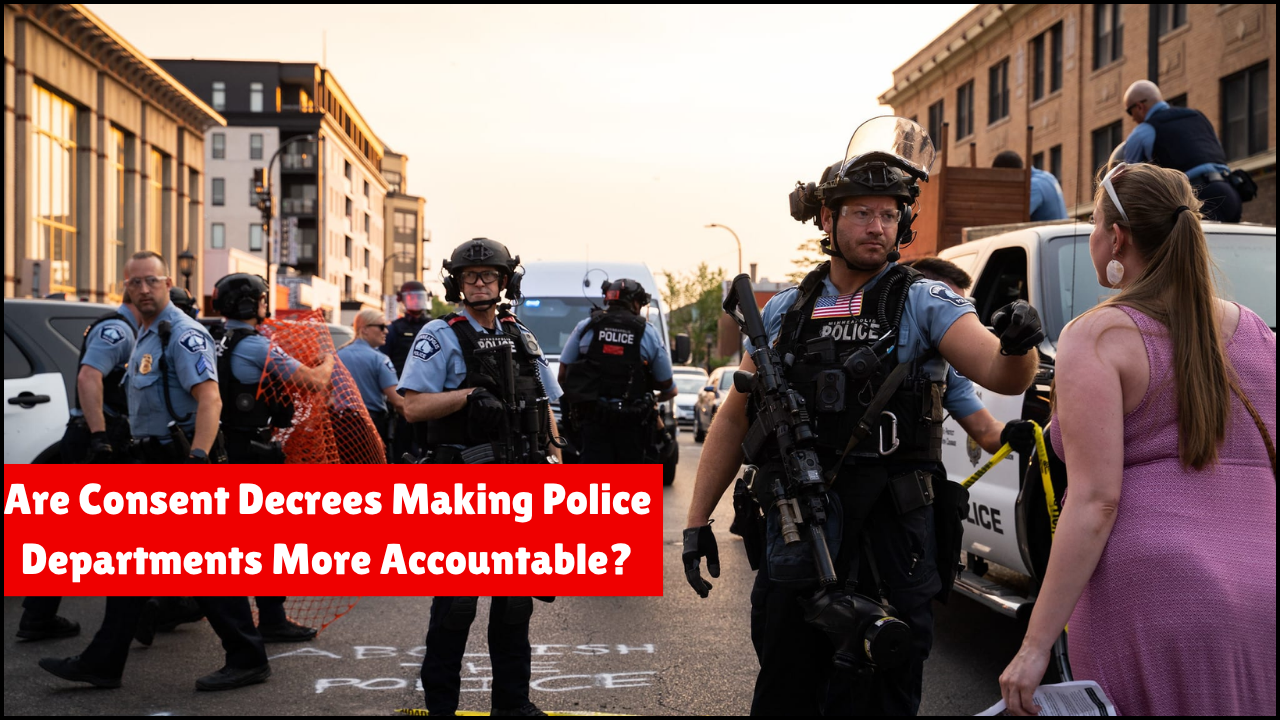
Police reform in 2025 reflects a significant shift in how law enforcement agencies operate across various regions. Public pressure, technological advancements, and legislative changes have led to both progress and challenges. Some jurisdictions have achieved measurable improvements in transparency, community trust, and officer accountability. However, other regions continue to struggle with issues such as racial profiling, excessive force, and union resistance. Understanding these dynamics provides a clearer picture of what has worked and where more efforts are required.
Table of Contents
Major Successes in Police Reform
Community-Centered Policing
- Police departments have restructured patrol methods to focus on community trust.
- Officers participate in neighborhood meetings and outreach programs.
- Citizen advisory boards influence department decisions.
De-escalation Training
- Mandatory de-escalation courses have reduced violent confrontations.
- Officers are trained in mental health first aid and non-lethal response strategies.
- Scenario-based training programs emphasize empathy and calm resolution.
Increased Transparency
- Many cities have adopted real-time public dashboards showing arrest data and use-of-force incidents.
- Body-worn cameras are now standard, and footage is often released after critical incidents.
- Internal affairs investigations are increasingly being overseen by independent review boards.
Legislative Reforms
- New laws limit qualified immunity and enable civilians to file misconduct claims more easily.
- States have mandated psychological evaluations and re-certification for officers.
- No-knock warrants have been restricted or banned in multiple jurisdictions.
Data-Driven Decision Making
- Predictive policing has been revised to eliminate racial bias and focus on crime patterns.
- Independent research institutions analyze arrest and conviction disparities.
- Real-time crime mapping helps officers deploy resources more fairly.
Key Police Reform Measures Adopted in 2025
| Reform Measure | Details |
|---|---|
| Body-Worn Cameras | Deployed in over 85% of departments; increased footage transparency |
| Independent Review Boards | Civilian panels review complaints and officer-involved incidents |
| Bias Training | Implicit bias and anti-racism training mandatory across police academies |
| Mental Health Co-Responders | Social workers dispatched with officers during behavioral crisis calls |
| Public Dashboards | Arrests, stops, and misconduct statistics updated monthly for public access |
Persistent Setbacks in Reform Implementation
Resistance from Police Unions
- Collective bargaining agreements still protect problematic officers from termination.
- Unions challenge new accountability measures through legal avenues.
- Reform legislation often excludes provisions that weaken union influence.
Uneven Implementation Across Regions
- Wealthier urban areas have resources to implement reforms more effectively.
- Rural departments face funding shortages and staffing issues.
- Federal reform proposals remain stalled or inconsistently applied by states.
Racial Disparities Remain
- Black and Latino individuals continue to face disproportionate stops and searches.
- Discrimination complaints remain high despite anti-bias training.
- Communities of color report continued distrust in law enforcement.
Inadequate Mental Health Integration
- Not all jurisdictions have adopted co-responder models.
- Police still handle mental health calls without proper support in many regions.
- Some fatal incidents occur due to a lack of coordination with health services.
Technological Challenges
- Body cam footage is occasionally withheld or lost.
- Facial recognition tech still raises privacy and racial profiling concerns.
- Algorithms used in predictive policing sometimes replicate existing biases.
Common Barriers to Effective Police Reform
| Barrier | Explanation |
|---|---|
| Union Contracts | Make it difficult to discipline or remove officers with repeated misconduct |
| Funding Gaps | Smaller cities lack resources for new training and tech implementation |
| Political Polarization | Reform efforts stall due to partisan disagreement at the state and federal levels |
| Incomplete Data Reporting | Some departments fail to report use-of-force and stop data regularly |
| Cultural Resistance | Some officers and command staff resist new norms and reject civilian oversight |
Emerging Trends and Innovations
Restorative Justice Initiatives
- Pilot programs involve victims, offenders, and community members in resolution sessions.
- These programs aim to repair harm rather than punish.
- Early data show reduced recidivism in jurisdictions where these programs are active.
AI Monitoring and Analysis
- Artificial intelligence tools now review body cam footage for patterns of misconduct.
- Algorithms flag inappropriate language, excessive force, or violation of protocol.
- Some cities use AI to evaluate officer performance beyond raw arrest numbers.
Youth Engagement Programs
- Police departments collaborate with schools and nonprofits.
- Officers serve as mentors in high-risk neighborhoods.
- Programs promote mutual understanding and early intervention.
Use-of-Force Policy Overhauls
- “Duty to intervene” clauses are mandatory in most departments.
- Chokeholds and carotid holds are banned in many jurisdictions.
- Less-lethal tools like tasers and foam bullets are encouraged over firearms.
Promising Innovations in Police Reform
| Innovation | Function |
|---|---|
| AI-Reviewed Body Cam Footage | Automates misconduct detection and reduces internal cover-ups |
| Restorative Justice Programs | Focus on repairing harm rather than punishment |
| Police-School Partnerships | Build early trust between officers and youth |
| Revised Use-of-Force Policies | Clarify limits and emphasize non-lethal responses |
| Behavioral Health Teams | Integrate mental health professionals into policing for crisis response |
Public Opinion and Community Involvement
Growing Public Support for Reform
- Polls show a majority support body cameras, civilian review boards, and de-escalation training.
- Communities actively engage through forums, protests, and online platforms.
- Local elections increasingly center around law enforcement accountability.
Civilian Oversight Expansion
- Independent commissions have subpoena power in some areas.
- Community members participate in hiring and promotion boards for officers.
- Some departments pilot community-elected oversight bodies.
Public Awareness Campaigns
- NGOs and activists lead efforts to educate citizens on their rights.
- Documentaries and media coverage highlight real-life stories of reform successes and failures.
- Public access to records has empowered more informed advocacy.
Final Thoughts
Police reform in 2025 reflects a mixed landscape of hope and hesitation. While many cities and states have made substantial progress in increasing transparency, trust, and accountability, deep-rooted challenges remain. Structural issues like union resistance, inconsistent application of reforms, and persistent racial disparities limit the overall impact. Continued innovation, community involvement, and political will are essential to sustain the momentum. A balanced approach that embraces both justice and public safety remains the goal.





